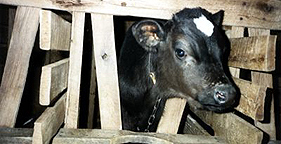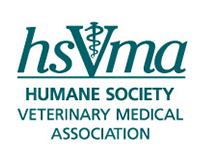HSVMA Petitions AVMA on Veal Crate Issue: Veterinarians Should Take a Stand Against Cruel ConfinementMay 19, 2008 The Humane Society Veterinary Medical Association (HSVMA) recently submitted a petition to the American Veterinary Medical Association (AVMA) asking the association to adopt a resolution pertaining to the confinement of calves raised for veal. The petition, signed by 189 HSVMA veterinary members, will be considered by the AVMA House of Delegates at its annual meeting in New Orleans in July.  Calves raised for veal are often confined in these restrictive crates. Farm Sanctuary The petition asks the AVMA to support a “change in veal husbandry practices from the individual calf crate system that severely restricts movement to group housing systems that allow for freedom of movement and socialization, in order to enhance the welfare of calves contained therein.” Male calves, a byproduct of the dairy business, have been used in the veal industry for decades. Of no use in producing milk, the calves are sold to veal farms. In order to retain the look of pale flesh and the tenderness desired to command a high price, the young animals are kept almost motionless to prevent muscle development and only fed milk long after they should be eating solid food, which results in their flesh remaining pale. These practices induce both physical and psychological suffering. The resolution outlines the most urgent concerns of the HSVMA and its veterinary members, including:
HSVMA looks forward to positive action by the AVMA House of Delegates at its July meeting. Dr. Holly Cheever, DVM, a member of the HSVMA Leadership Council, will present the resolution on behalf of HSVMA. |
